Ransomware Spotlight: Black Basta
Top affected countries and industries according to Trend Micro data
In this section, we discuss Trend Micro™ Smart Protection Network™ data on Black Basta’s activity from April 1 to July 31, 2022, which refers to detections of the ransomware’s attempts to compromise organizations.
Just two countries accounted for over half of the group’s 44 ransomware attack attempts during this period, which were concentrated in the US at 43%, with Austria a distant second at 15%. As Black Basta has sought to purchase network access credentials for organizations located specifically in the US, among other countries, this may explain the higher number of attacks against US-based businesses.
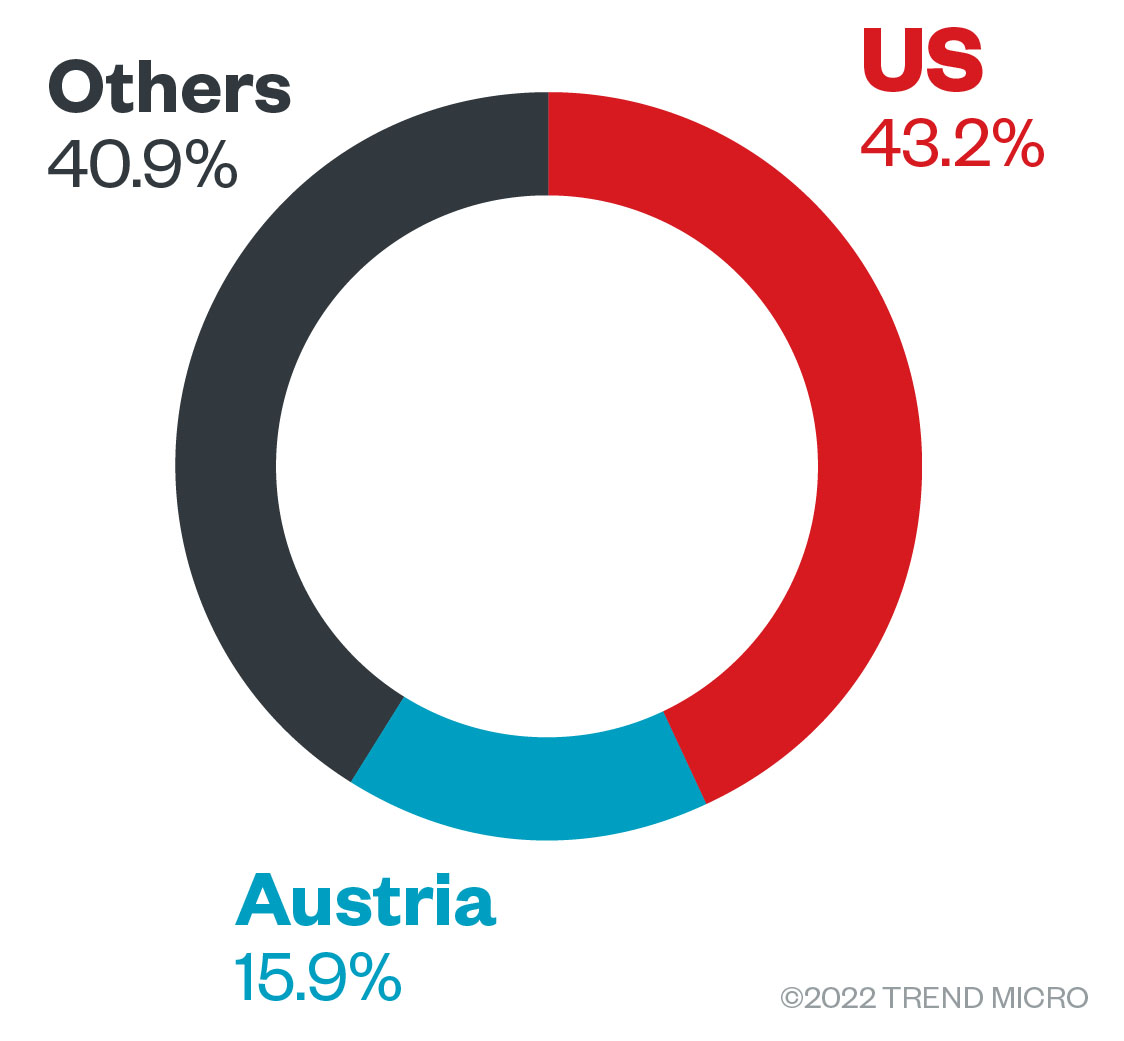
Figure 1. The countries with the most Black Basta ransomware attack attempts in terms of infected machines from April 1 to July 31, 2022
Source: Trend Micro™ Smart Protection Network™
As of this writing, our detections show that Black Basta activity is spread across many different industries. The group has been observed targeting businesses involved in technology, insurance, manufacturing, and utilities.
Although Black Basta is a relatively new arrival to the ransomware scene, its detections have been on a steady climb since the ransomware gang surfaced in April, peaking at 22 attack attempts in June before tapering down to 11 the following month.
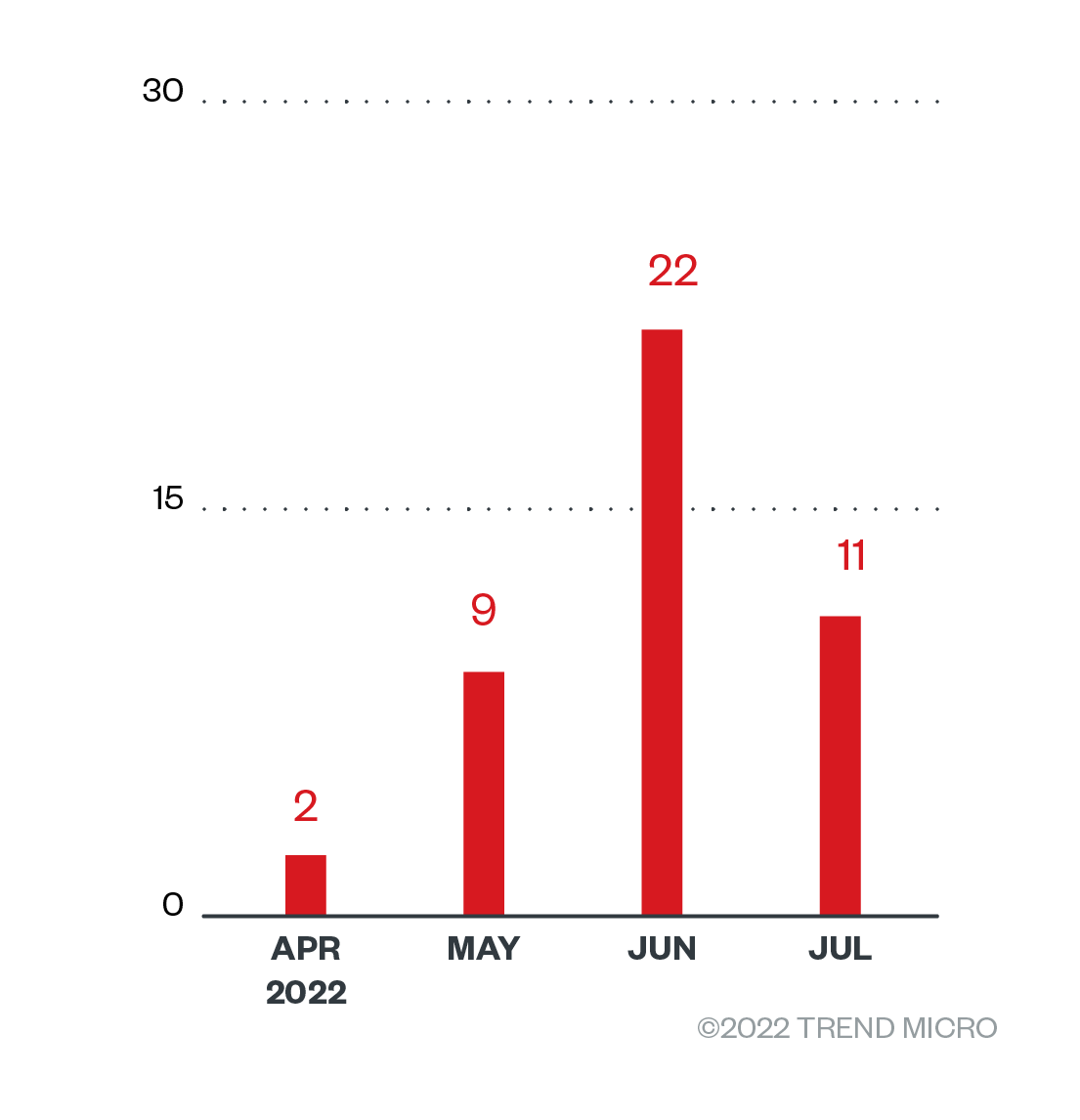
Figure 2. The numbers of detections of Black Basta ransomware attack attempts in terms of infected machines in each month from April 1 to July 31, 2022
Source: Trend Micro Smart Protection Network
Targeted regions and industries according to Black Basta’s leak site
In this section, we look into the attacks recorded on the Black Basta group’s leak site, which represent successfully compromised organizations that, as of this writing, have refused to pay ransom. Our detections, which pertain to Trend Micro customers, captured only a fraction of the victims found in Black Basta’s leak site. Trend Micro’s open-source intelligence (OSINT) research and investigation of the site show that from April 1 to July 31, 2022, the group compromised a total of 80 organizations.
The bulk of Black Basta’ victims were based in North America, which had a victim count of 44, followed by Europe and the Asia-Pacific. More specifically, the US was at the receiving end of most of the attacks, with 38 affected organizations. Many confirmed ransomware attacks also took place in Germany, with 19 victims.

Figure 3. The distribution by region of Black Basta’s victim organizations from April 1 to July 31, 2022
Sources: Black Basta’s leak site and Trend Micro’s OSINT research
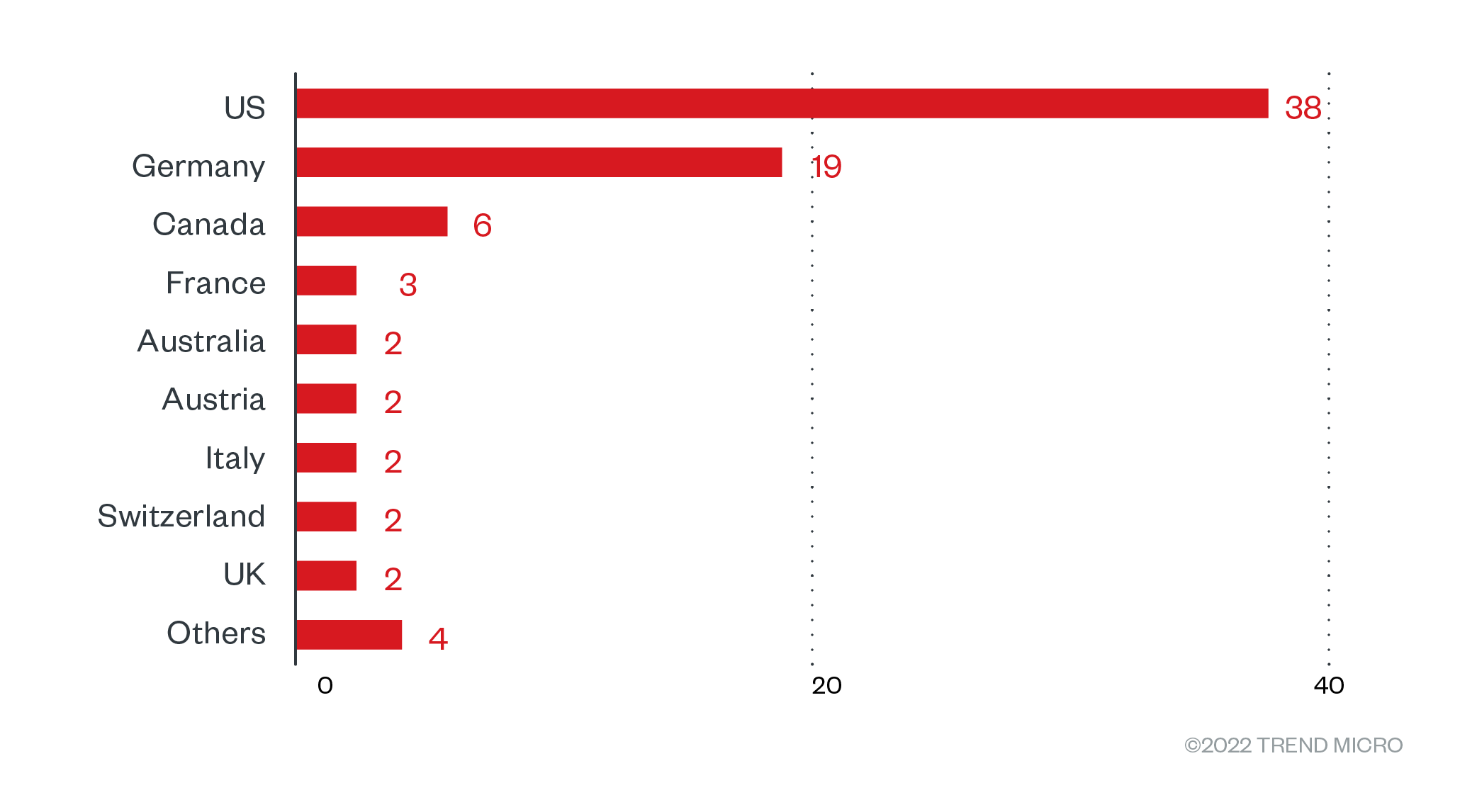
Figure 4. The distribution by country of Black Basta’s victim organizations from April 1 to July 31, 2022
Sources: Black Basta’s leak site and Trend Micro’s OSINT research
Black Basta’s attacks affected a variety of organizations. Construction businesses topped the list with a victim count of 10, while businesses involved in professional services came in second with nine victims. Medium-size organizations made up the lion’s share of recorded Black Basta victims.
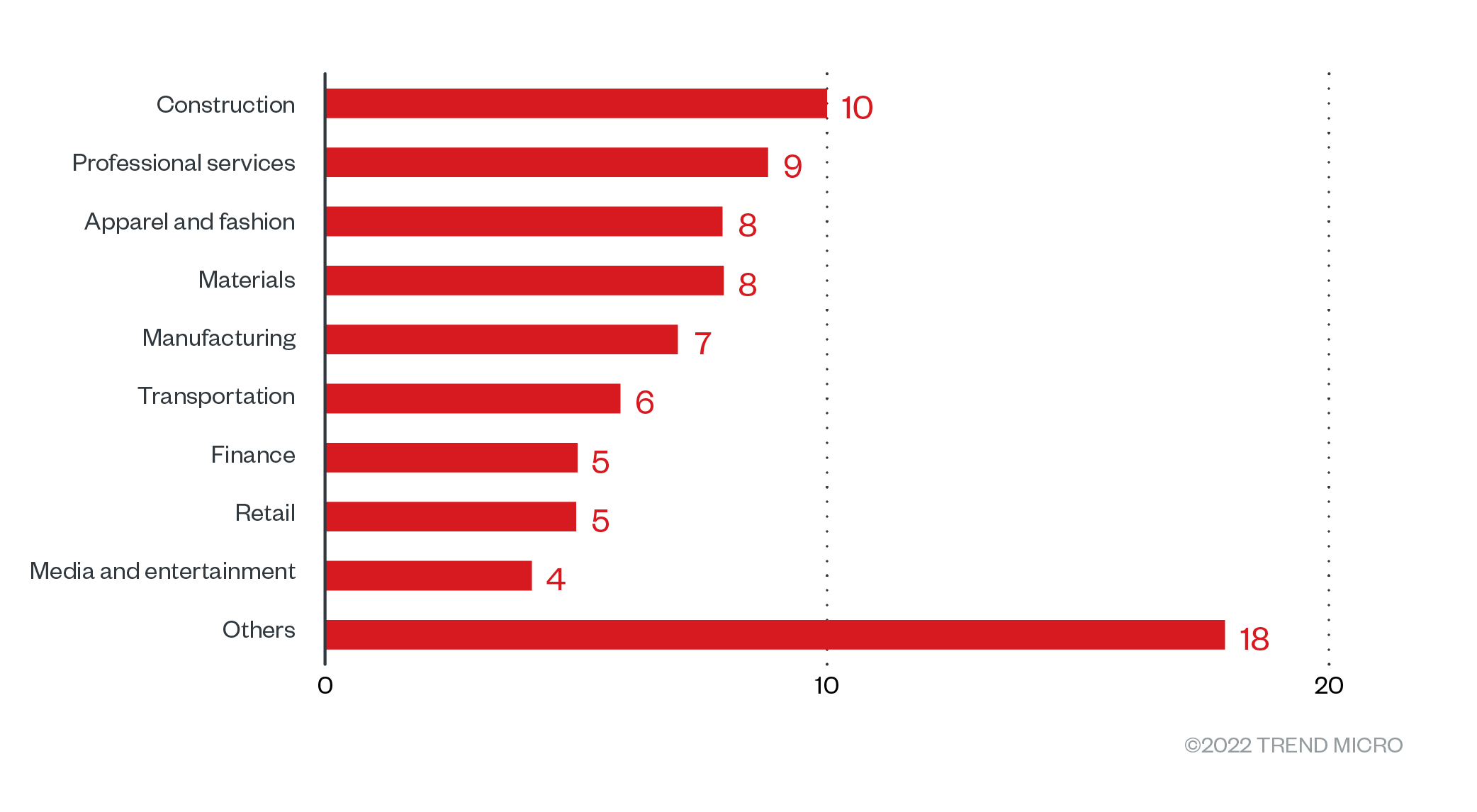
Figure 5. The distribution by industry of Black Basta’s victim organizations from April 1 to July 31, 2022
Sources: Black Basta’s leak site and Trend Micro’s OSINT research
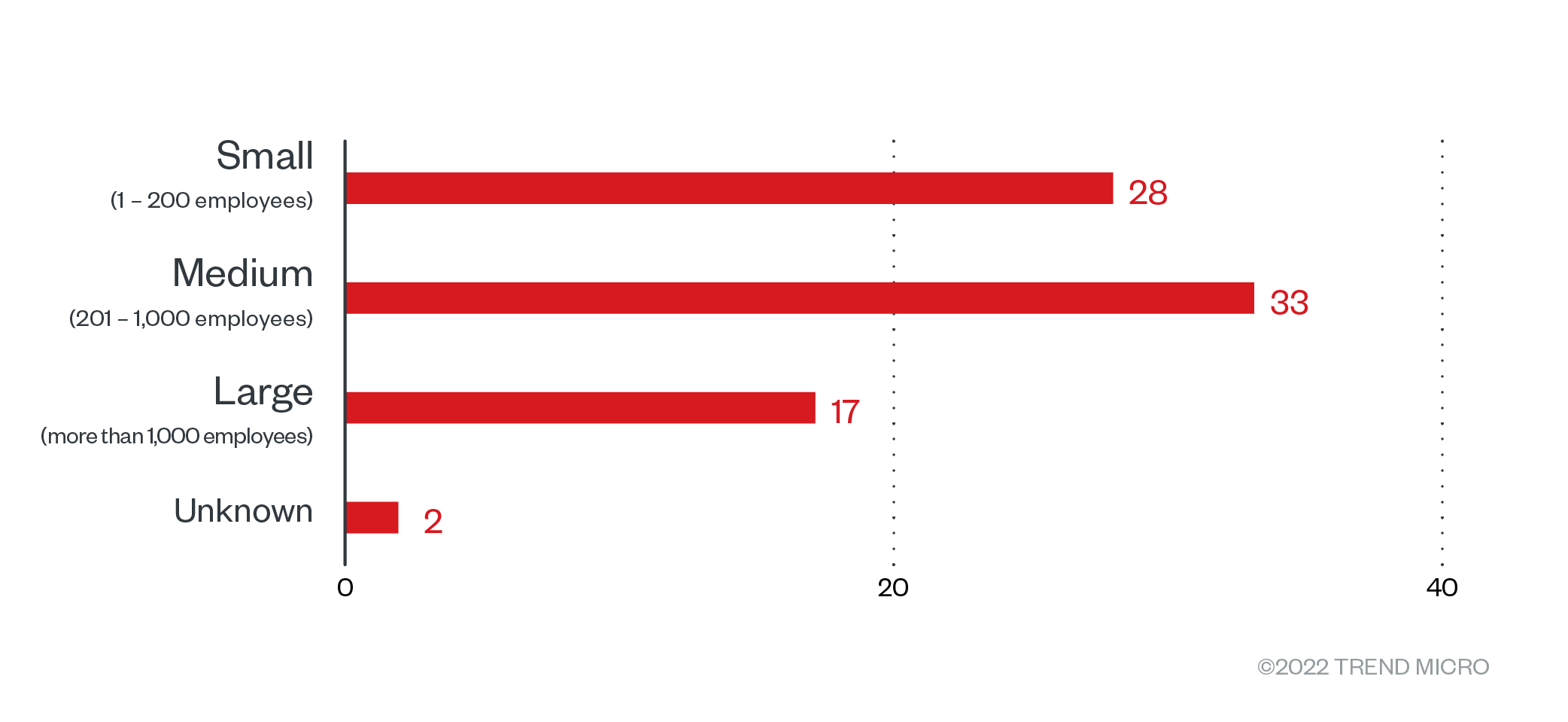
Figure 6. The distribution by organization size of Black Basta’s victim organizations from April 1 to July 31, 2022
Sources: Black Basta’s leak site and Trend Micro’s OSINT research
Infection chain and techniques
As Black Basta’s operations are based on the RaaS model, its infection chain might vary depending on the target. The infection chain illustrated below details the variety of tactics and tools the group uses.
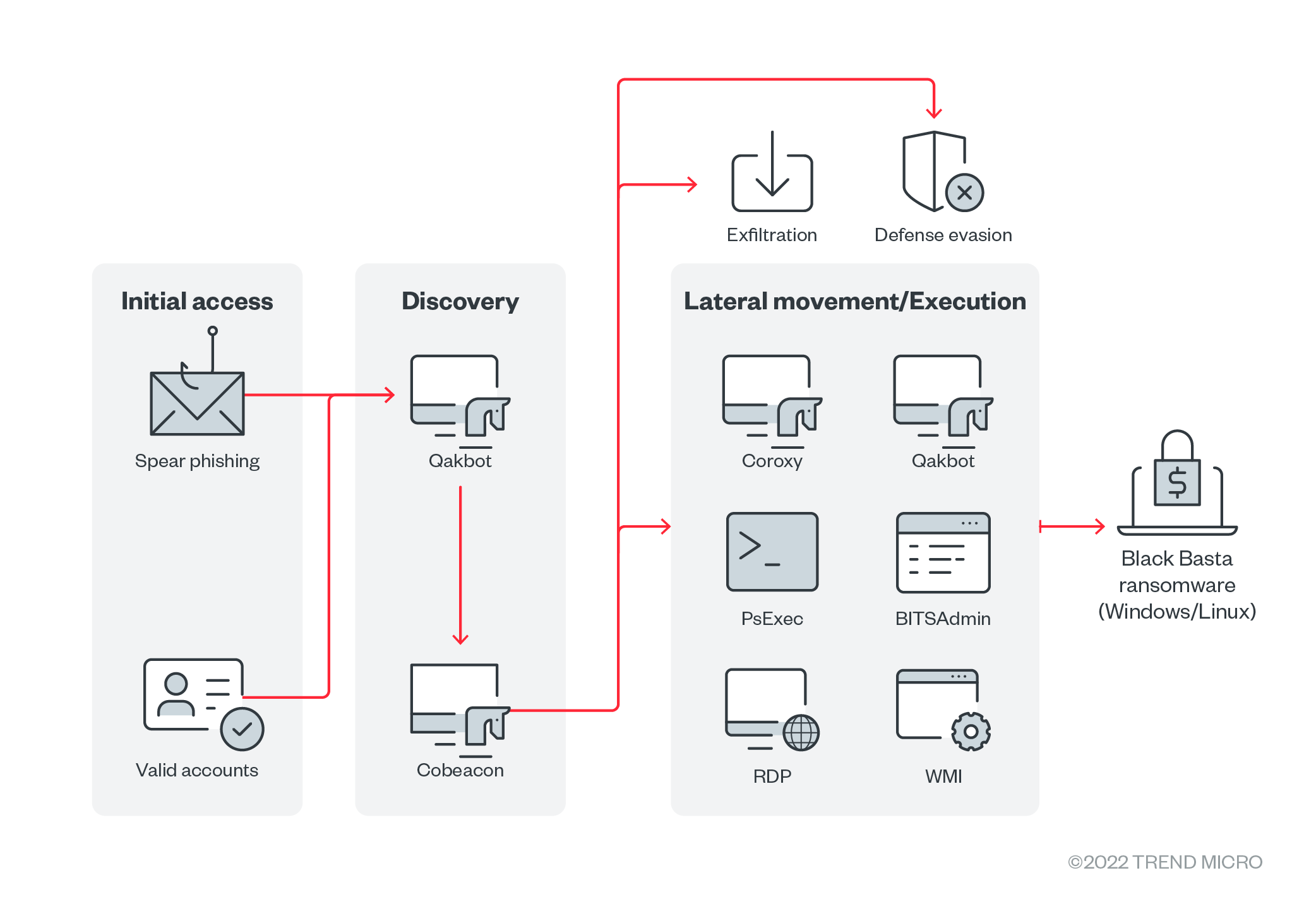
Figure 7. Black Basta’s infection chain
Initial access
- External data reports that a user named “Black Basta” posted on underground forums seeking corporate network access credentials, offering a share of the profit from their attacks as payment. These reports are supported by the fact that a unique ID is hard-coded in each Black Basta build, which could also mean that the ransomware gang does not distribute its malware sporadically.
- Our internal telemetry shows another set of samples, which were monitored within a 72-hour time frame, that were using Qakbot. The malware is downloaded and executed from a malicious Excel file and then executes certain PowerShell commands as part of its staging phase
Discovery
- Black Basta uses PowerShell scripts to scan information about the compromised system or network.
- It uses Qakbot’s and Cobeacon’s information-gathering capabilities to scan the compromised system or network.
- It uses third-party tools such as Netcat to scan the compromised system or network.
Defense evasion
- Black Basta uses a batch script containing PowerShell commands to disable antimalware applications.
- It uses Group Policy Objects (GPOs) to disable Windows Defender and Security Center.
- It reboots the victim’s computer in safe mode to circumvent any antimalware applications.
Privilege escalation
- Black Basta exploits the PrintNightmare vulnerability (CVE-2021-34527) to perform privileged operations and deliver the Cobalt Strike beacon (aka Cobeacon) or other payloads.
Credential access
- Black Basta uses Mimikatz to dump credentials.
Lateral movement
- Black Basta uses different tools and pieces of malware to spread its ransomware to other remote systems in the network:
- BITSAdmin
- PsExec
- Windows Management Instrumentation (WMI)
- RDP
- Qakbot
- Cobeacon
Exfiltration
- Black Basta uses Cobeacon to exfiltrate the stolen data on an established command-and-control (C&C) server.
- It uses Rclone to exfiltrate data from compromised systems.
Impact
- Black Basta uses the ChaCha20 algorithm to encrypt files. The ChaCha20 encryption key is then encrypted with a public RSA-4096 key that is included in the executable.
- Multiple builds of Black Basta ransomware have been found in the wild
- One build restarts the victim’s system in safe mode, most likely for evasion purposes, before performing encryption. This build also modifies the “Fax” service to enable it to run in safe mode and with service-level access.
- Another build contains only the ransomware’s core capabilities, such as wallpaper defacement, file encryption, and deletion of shadow copies.
- A newly found build has a new addition: the -bomb argument, which theoretically allows the ransomware to automatically target all connected machines for encryption.
- The Linux build of the ransomware targets the folder /vmfs/volumes, where images from virtual machines are contained, for encryption. To encrypt other folders, the ransomware actors include the -forcepath argument.
- Black Basta displays a ransomware note as the victim’s wallpaper directing them to a .txt file with more details.
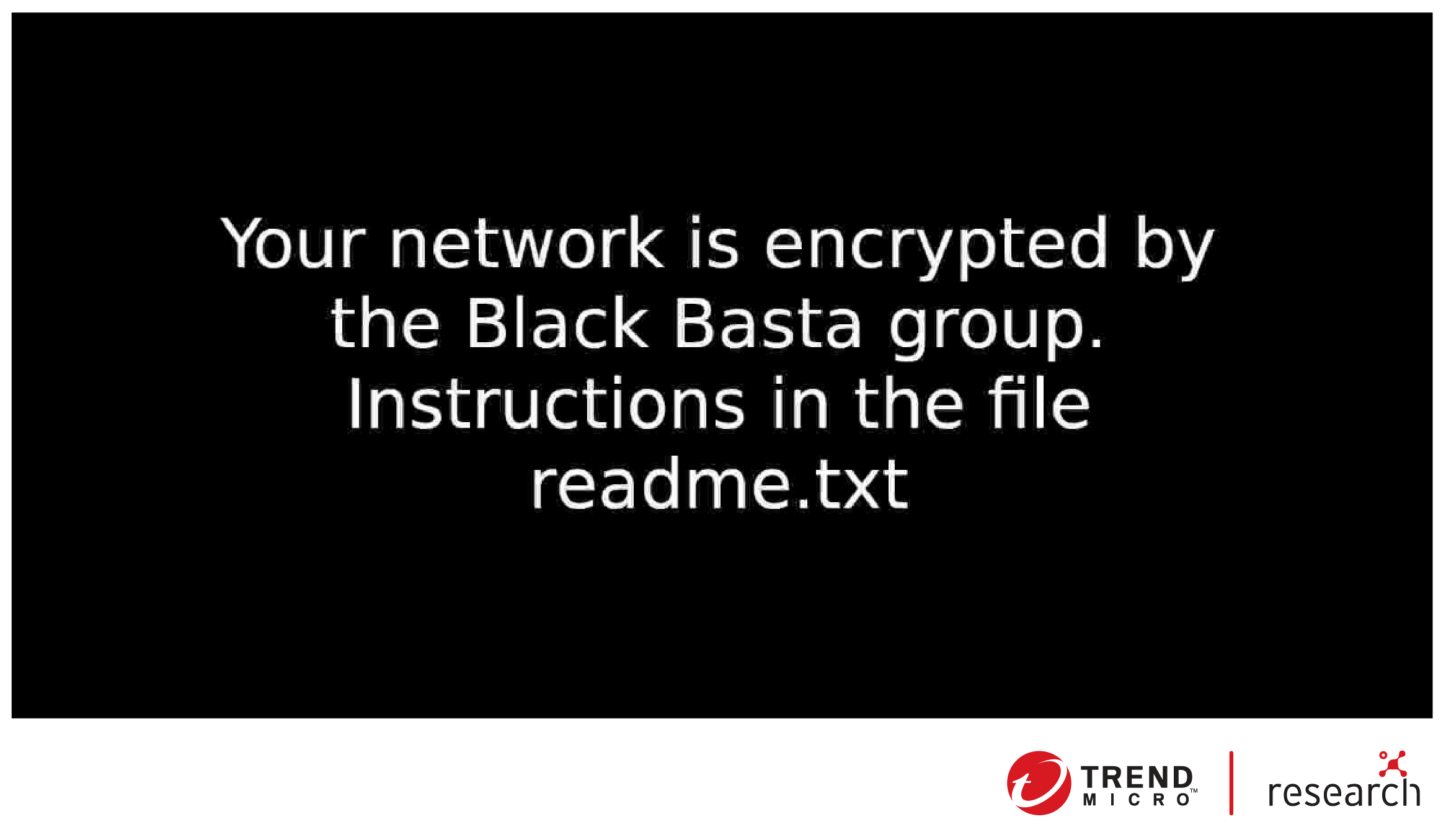
Other technical details
- Black Basta avoids encrypting files in these folders:
- $Recycle.Bin
- Windows
- Local Settings
- Application Data
- boot
- It avoids encrypting files with these strings in their file names:
- OUT.txt
- NTUSER.DAT
- readme.txt (the ransom note)
- dlaksjdoiwq.jpg (a desktop wallpaper found in the %TEMP% folder)
- fkdjsadasd.ico (an icon used for encrypted files, found in the %TEMP% folder)
- It drops a ransom note as a .txt file in an encrypted folder in the victim’s machine.
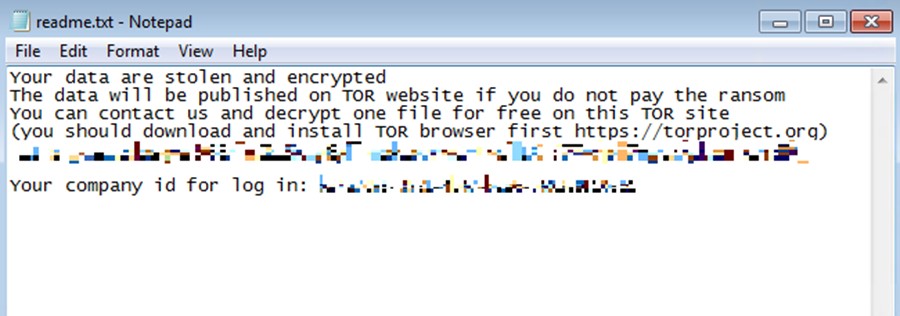
Figure 9. An example of the contents of the ransom note .txt file
MITRE ATT&CK tactics and techniques
| Initial access | Execution | Privilege escalation | Defense evasion | Credential access | Discovery | Lateral movement | Exfiltration | Impact |
|---|---|---|---|---|---|---|---|---|
T1078 - Valid accounts T1566.001 - Phishing: Spear-phishing attachment | T1059.003 - Command and scripting interpreter T1569.002 - System services: Service execution T1047 - Windows Management Instrumentation | T1068 - Exploitation for privilege escalation | T1112 - Modify registry T1484.001 - Domain policy modification: Group policy modification T1562.001 - Impair defenses: Disable or modify tools T1562.009 - Impair defenses: Safe mode boot T1620 - Reflective code loading | T1003 - OS credential dumping | T1082 - System information discovery T1018 - Remote system discovery T1083 - File and directory discovery | T1570 - Lateral tool transfer T1021.001 - Remote services: Remote Desktop Protocol | T1041 - Exfiltration over C&C channel T1567 - Exfiltration over web service | T1490 - Inhibit system recovery T1489 - Service stop T1486 - Data encrypted for impact Encrypts files and adds the extension “.basta”. T1491 - Defacement |
Summary of tools, exploit, and other malware used
Security teams can keep an eye out for the presence of these tools, exploit, and other malware that are typically used in Black Basta’s ransomware attacks:
| Initial access | Discovery | Privilege escalation | Credential access | Lateral movement | Execution | Exfiltration | Command and control | Impact |
|---|---|---|---|---|---|---|---|---|
|
|
|
|
|
|
|
|
|
Security recommendations
Security researchers have speculated that Black Basta might be an offshoot of the infamous Conti ransomware gang. It has also exhibited similarities to the Black Matter ransomware gang, including a resemblance between their respective leak sites. Its possible connection to these ransomware groups might explain the high level of in-house expertise behind Black Basta’s attacks.
In defending systems against threats like Black Basta, organizations can benefit from establishing security frameworks that can allocate resources systematically for establishing solid defenses against ransomware. Here are some best practices that can be included in these frameworks:
Audit and inventory
- Take an inventory of assets and data.
- Identify authorized and unauthorized devices and software.
- Make an audit of event and incident logs.
Configure and monitor
- Manage hardware and software configurations.
- Grant admin privileges and access only when necessary to an employee’s role.
- Monitor network ports, protocols, and services.
- Activate security configurations on network infrastructure devices such as firewalls and routers.
- Establish a software allowlist that only executes legitimate applications.
Patch and update
- Conduct regular vulnerability assessments.
- Perform patching or virtual patching for operating systems and applications.
- Update software and applications to their latest versions.
Protect and recover
- Implement data protection, backup, and recovery measures.
- Enable multifactor authentication (MFA).
Secure and defend
- Employ sandbox analysis to block malicious emails.
- Deploy the latest versions of security solutions to all layers of the system, including email, endpoint, web, and network.
- Detect early signs of an attack such as the presence of suspicious tools in the system.
- Use advanced detection technologies such as those powered by AI and machine learning.
Train and test
- Regularly train and assess employees on security skills.
- Conduct red-team exercises and penetration tests.
A multilayered approach can help organizations guard possible entry points into the system (endpoint, email, web, and network). Security solutions that can detect malicious components and suspicious behavior can also help protect enterprises:
- Trend Micro Vision One™ provides multilayered protection and behavior detection, which helps block questionable behavior and tools early on before the ransomware can do irreversible damage to the system.
- Trend Micro Cloud One™ – Workload Security protects systems against both known and unknown threats that exploit vulnerabilities. This protection is made possible through techniques such as virtual patching and machine learning.
- Trend Micro™ Deep Discovery™ Email Inspector employs custom sandboxing and advanced analysis techniques to effectively block malicious emails, including phishing emails that can serve as entry points for ransomware.
- Trend Micro Apex One™ offers next-level automated threat detection and response against advanced concerns such as fileless threats and ransomware, ensuring the protection of endpoints.
Indicators of compromise (IOCs)
The indicators of compromise (IOCs) for the threat discussed in this article can be found here. Actual indicators might vary per attack.
Like it? Add this infographic to your site:
1. Click on the box below. 2. Press Ctrl+A to select all. 3. Press Ctrl+C to copy. 4. Paste the code into your page (Ctrl+V).
Image will appear the same size as you see above.
Messages récents
- Estimating Future Risk Outbreaks at Scale in Real-World Deployments
- The Next Phase of Cybercrime: Agentic AI and the Shift to Autonomous Criminal Operations
- Reimagining Fraud Operations: The Rise of AI-Powered Scam Assembly Lines
- The Devil Reviews Xanthorox: A Criminal-Focused Analysis of the Latest Malicious LLM Offering
- AI Security Starts Here: The Essentials for Every Organization


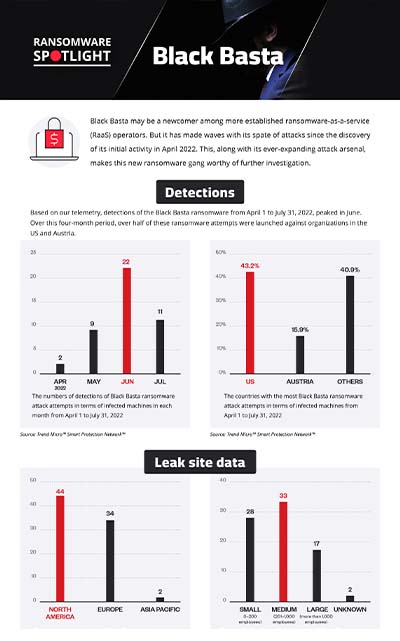
 Complexity and Visibility Gaps in Power Automate
Complexity and Visibility Gaps in Power Automate AI Security Starts Here: The Essentials for Every Organization
AI Security Starts Here: The Essentials for Every Organization Ransomware Spotlight: DragonForce
Ransomware Spotlight: DragonForce Stay Ahead of AI Threats: Secure LLM Applications With Trend Vision One
Stay Ahead of AI Threats: Secure LLM Applications With Trend Vision One